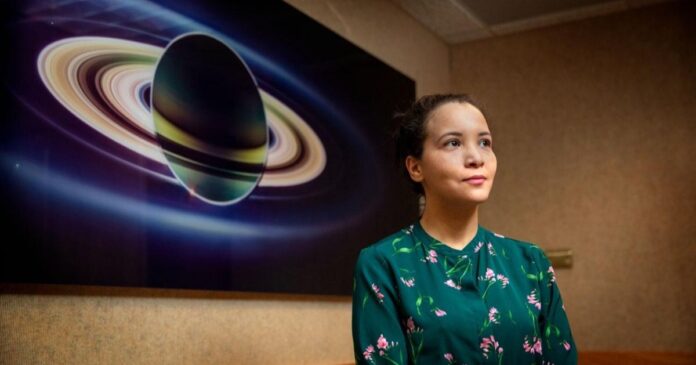A team from the Southwest Research Institute (SwRI), led by Moroccan scientist Maryame El Moutamid, has discovered a previously unknown natural satellite orbiting Uranus. The small moon was identified using data captured on February 2, 2025, by the James Webb Space Telescope (JWST). This announcement, now officially confirmed by SwRI, brings Uranus’ known moon count to 29.
According to El Moutamid, the discovery sheds new light on the tightly packed system of Uranus, where its moons orbit so close to each other that they frequently interact through gravitational disturbances. These disruptions could lead to long-term instability, potentially resulting in collisions between satellites. Such impacts may generate denser ring systems, which over time—on a scale of roughly 50 million years—could spread out and eventually give birth to new moons.
The newly detected object is just about 10 kilometers across, making it the smallest Uranian moon ever identified. Its presence was revealed through ten long-exposure observations, each lasting 40 minutes, taken by the JWST’s near-infrared camera. The level of detail achieved in these images far surpasses the capabilities of Voyager 2, the only spacecraft to have flown past Uranus, back in 1986.
The moon orbits near the edge of Uranus’ inner rings, at a distance of approximately 56,250 kilometers from the planet’s center. It lies within the planet’s equatorial plane, nestled between the orbits of the known moons Ophelia and Bianca. Uranus’ moons—especially its five major satellites Titania, Oberon, Umbriel, Ariel, and Miranda—are traditionally named after characters from the works of William Shakespeare and Alexander Pope.
Maryame El Moutamid, originally from Essaouira, completed her early education in Morocco before earning a doctorate in France and later conducting postdoctoral research at Cornell University in the United States. Now a senior scientist at SwRI, she leads an extensive Uranus observation program using the JWST. She points out that Uranus’ unusual axial tilt—causing it to rotate on its side—makes it uniquely suited for studying both its rings and moons.
Looking ahead, El Moutamid hopes to spearhead a future unmanned mission to Saturn. Her goal: to explore the planet’s complex ring system and certain moons believed to harbor subsurface oceans, in order to gain deeper insight into their geological makeup and dynamic evolution.





